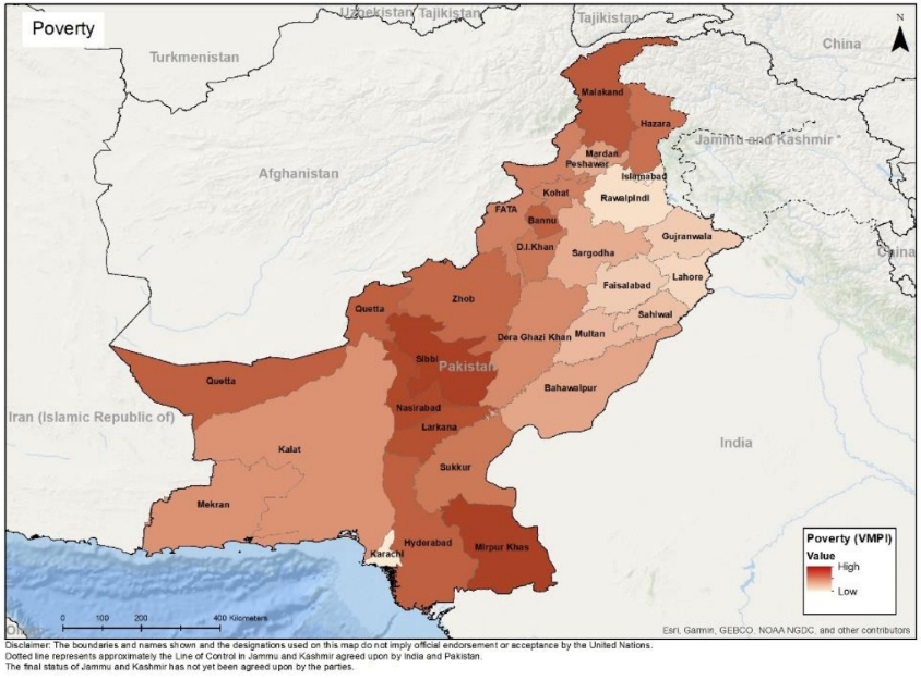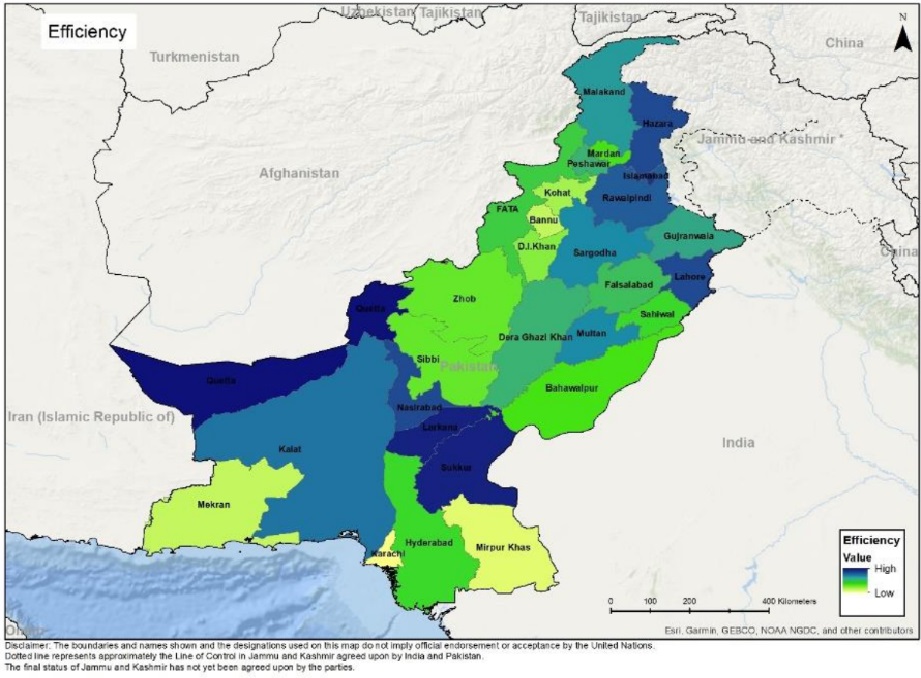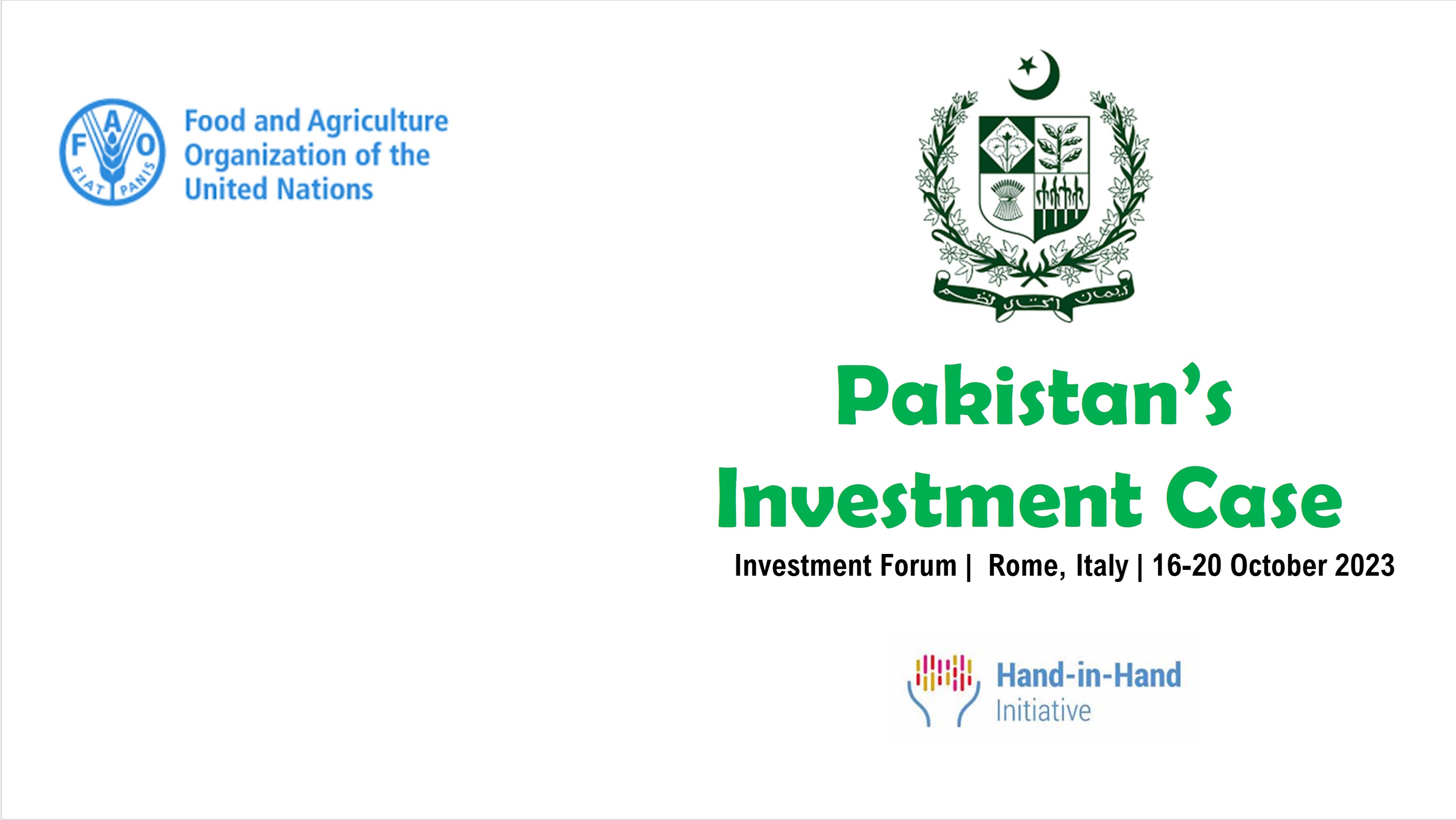INVESTMENT PRESENTATION
THE PROPOSAL
The HIH Initiative in Pakistan seeks to accelerate agricultural transformation sustainably. The Government has identified potential investment opportunities in developing agricultural value chains of 20 commodity clusters. The Pakistani Government also plans to restore the Indus River Basin to build resilience against climate change. Both initiatives will support the Government’s efforts to achieve cluster-based development — which can enable smallholder producers to engage in high-value agriculture — and ecosystem restoration in line with the Sustainable Development Goals and 2030 Agenda.
Cluster-based agriculture development approach is the basis for transformation of agriculture sector as it not only improves efficiency of development efforts by enhancing stakeholders’ synergistic collaboration to resolve issues in the value chain in their local contexts, but also helps to gather resources from large number of small investors into the desirable size needed for the cluster development. Initially, focus is made on selected eight commodities due to their high yield potential, export potential, attractive returns on investment.
The results of HiH Initiative study by FAO Pakistan on eight major commodities (Apple, Beef, Chili, Dates, Mango, Onion, Rice, Tomato) identifies two intervention areas for investors.
• Improving infrastructure across value chain and establishment of processing facilities for value-addition of agriculture produce reap different benefits due to improvement in quality & increased productivity, reduced post-harvest losses of raw material and high price for value added product in local and export market.
• Research & Development centers, Agriculture Machinery (Planters, Harvesters), Grading, Washing, Drying facilities, Pack Houses, Small Scale Feed mills, Calf Fattening Centers, Slaughterhouses, Cold Storage, Cold Chain etc.
Poverty
Potential
Efficiency



COMMODITIES AND INTERVENTIONS
Apple
Apple cultivation in Pakistan is predominantly concentrated in Northern and Central part of Balochistan. The financial and other impacts of various development interventions proposed in the form of 5-years long development projects for the apple clusters in central and northern is calculated by assuming hi density-plantation (i.e. by halving the inter-tree and inter-row distances) with trees of more productive imported and native modern varieties, adopting improved management practices, controlling post-harvest losses, and adding value addition facilities. As a result of these interventions, the Internal Rate of Returns (IRR) from both the clusters shall be to the tune of 31% for Central Balochistan cluster and 20% for Northern Balochistan cluster. On the investment side, total investment needed in project mode shall amount to USD 118 million.
Beef
In Pakistan, beef cluster is mainly located in Punjab and Sindh province of Pakistan. The intervention areas for investment are strengthening of research, capacity building of stakeholders, calf fattening units, establishment of hygienic slaughterhouses, feed mills, establishment of cattle markets. The Internal Rate of Return (IRR) is 38%, 47% and 33% for the clusters 1, 2 and 3 respectively. These estimated IRRs signify that cluster development interventions are likely to impact positively on the existing output of beef clusters but are likely to add value increasing the overall potential of the beef value chain in all the beef producing clusters.
Chilli
Chili cultivation in Pakistan is concentrated in two districts of Sindh, i.e. Umerkot and Mirpurkhas, which contribute 90% of chili production. The key entry points for investment are research systems for developing high yielding varieties, crop handling process during harvesting and post-harvesting, mechanized and controlled drying.
The total present value of economic returns is expected to be USD 2.7 million within the five year of project life. Accounting for all the fixed investment and variable costs including the production, processing, and marketing cost over the period of five years, the estimated Internal Rate of Return (IRR) for Umerkot-Sindh Cluster is 34%. In addition to the economic return, Chili contributes to an improvement of microclimate and helps in biodiversity conservation and carbon sequestration in mitigation of greenhouse gases. It provides habitat to diversity of wildlife and adds to the scenic view.
Dates
In Pakistan Dates are cultivated on 98,400 ha which produced 520,600 tons during 2021. The provinces of Balochistan and Sindh account for about 90% of the total production in Pakistan and the growing area. Orchard renovation with high density plantation, controlling post-harvest losses, mechanized and controlled drying through solar systems, value added products (confectionary, jams, jelly, syrup etc) from fresh dates are the key area of attraction for investment. Accounting for all the fixed costs and variable costs including the production, processing and marketing cost, the estimated Internal Rate of Return (IRR) for Balochistan cluster is 21.45%; for Sindh cluster the IRR is 26.99% and 28.55% for the Punjab-KP Cluster.
Mangoes
Pakistan’s mango industry is mainly located in two provinces – Punjab and Sindh. Mango production is cultivated on 63% area in Punjab and contribute 75% of total mango production followed by 37% area is in the province Sindh, contributing 25% to the Pakistan’s mango production. Improvement of value chain, Quality and Yield improvement through improved varieties, reduction of losses through improved integrated pest management and disease management are the key areas of intervention.
Accounting for all the fixed costs and variable costs including the production, processing and marketing cost, the estimated Internal Rate of Return (IRR) for Punjab cluster 32%% and for Sindh cluster the IRR is 19%, based on respective investment costs in each region and the present value of resulting revenues over the period of ten years
Onion
In Pakistan, onion is grown across all the provinces and regions of Pakistan each having different harvesting periods giving some spread in the fresh availability of onion. Sindh is the major onion producing province as it alone contributes about 38% in area and 44% in onion production of the country followed by Balochistan which contribute about 21% in area and 33% in production. Investment in research system, post-harvest losses reduction and improved processing facilities have financial attractiveness.
Accounting for all the fixed costs and variable costs including the production, processing and marketing cost, the estimated Internal Rate of Return (IRR) for Sindh cluster is 23%; for Balochistan cluster is 30% while 37% for the KP Cluster.
Rice (Basmati)
Paddy is the second most important cereal (3.5 million ha) and grown in all provinces (9.3 million tons) of Pakistan with high concentration in Sindh and Punjab. Rice contributes 2.4 percent to value added and 0.5 percent to GDP. As Basmati grain is the value-added variant of rice, this product variant has more export potential. Investing in the cluster where this variant is grown is likely to give higher returns. The estimated Internal Rate of Return (IRR) for Sheikhupura cluster is 27.7% and for Hafizabad cluster its 30%. Intervention areas are farm mechanization, drying process, and crop management.
Tomato
In Pakistan, tomato cluster are located in provinces of Balochistan, KPK, and Sindh which is the major cluster among three provinces. Investment in research, reduction of post-harvest losses, improvement in farm management and processing of value added products are the major area of intervention. the estimated Internal Rate of Return (IRR) for Balochistan cluster is 19%; for Sindh cluster is 43% while 33% for the KP Cluster.
See the investment plan slide deck presentation from Pakistan for IF 2023.
Country Info
.jpg?sfvrsn=c9b8674_1)




